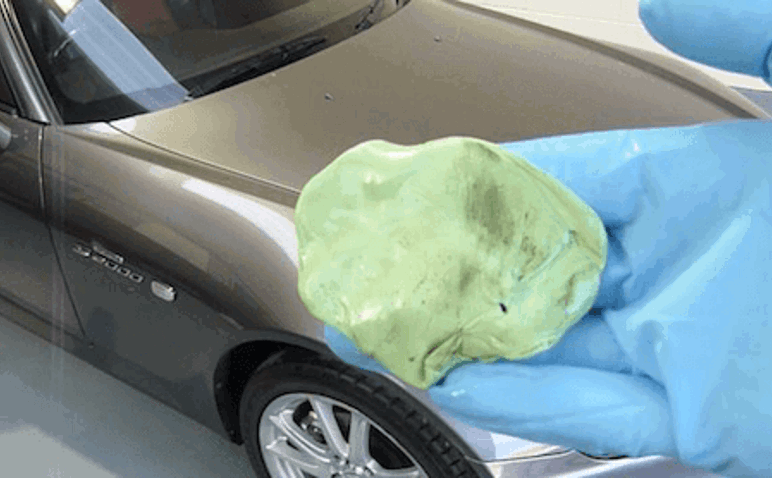
Claying Your Car
Claying is the process of removing bonded surface contaminants from your car that cannot be removed by washing alone and that need to be eliminated before the polishing process, using using a synthetic poly clay. It works by gently pulling and lifting the bonded contaminants off the surface which then become encapsulated in the clay. A detailing spray, or designated clay lube is used to lubricate the surface to prevent the claybar from inflicting damage as it is drawn across the surface.
One panel at a time is worked and once the clay has picked up contaminants it can be folded and remoulded to reveal a fresh, clean surface and prevent any contaminants being drawn over the surface. Claying is primarily used to remove bonded contaminants from the paintwork of your car but can also be used on glass, metal and other parts of your car depending on the grade of the clay being used.
You should clay your car if you are looking to achieve the best possible results. The depth of shine and reflection of a polished and waxed vehicle may be compromised if bonded surface contaminants have not been removed. It is important to clay your car before polishing because if the contaminants are picked up during the polishing process they may be drawn over the surface inflicting light scratches and swirl marks. It is also important to ensure bonded contaminants are removed because they will act to attract and accumulate other dirt and debris and if left bonded to the surface for a long enough period of time may even weaken the paintwork underneath.
Generally you should clay your car every time you give it a thorough clean including polishing and waxing etc. Claying should not be undertaken every time you clean your car as this is simply not required and increases the risk of damage being done. Check your car after washing and before polishing to see if claying is required. If your car has been thoroughly cleaned, polished, protected and the protection has been regularly reapplied, you may not need to clay before polishing. A claying session no more than twice a year is usually sufficient to keep most cars free from bonded surface contaminants.
You need to choose the right grade of clay. If you are unsure of which grade to use begin with a fine clay and work up through the grades as necessary until the contaminants have been successfully removed. A good quality detailing spray or designated clay lube is essential to ensure contaminants are removed safely. A micro fibre towel/micro fibre drying towel should be kept at hand to clean up any excess residue but your car should be rewashed or rerinsed after the claying process anyway to remove any final loose particles and residue.
Depending on the temperature of where you’re working your clay may need some warmth working into it to make it soft and malleable enough to use on the surface of your car first. A bucket with clean warm water can be used to soak the clay whilst washing and drying your car first if necessary.

